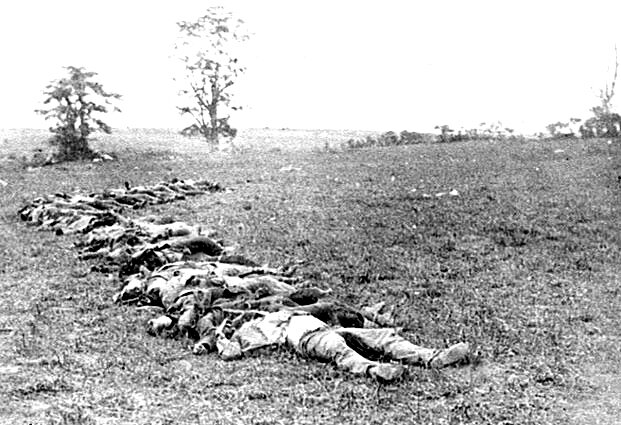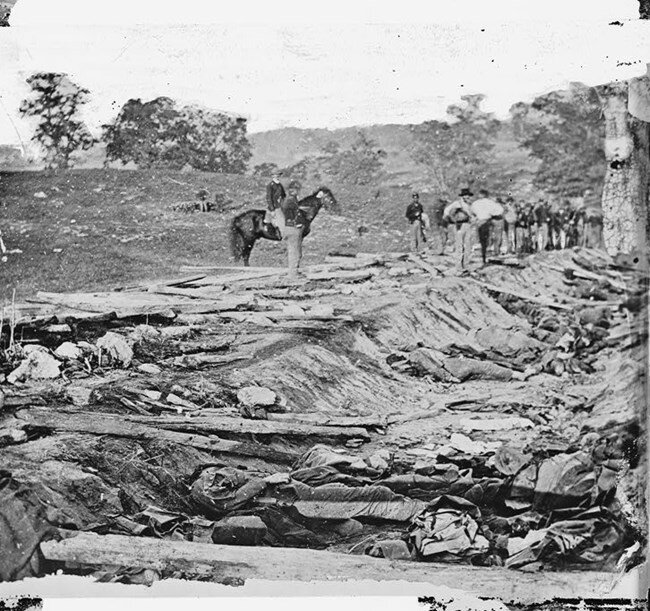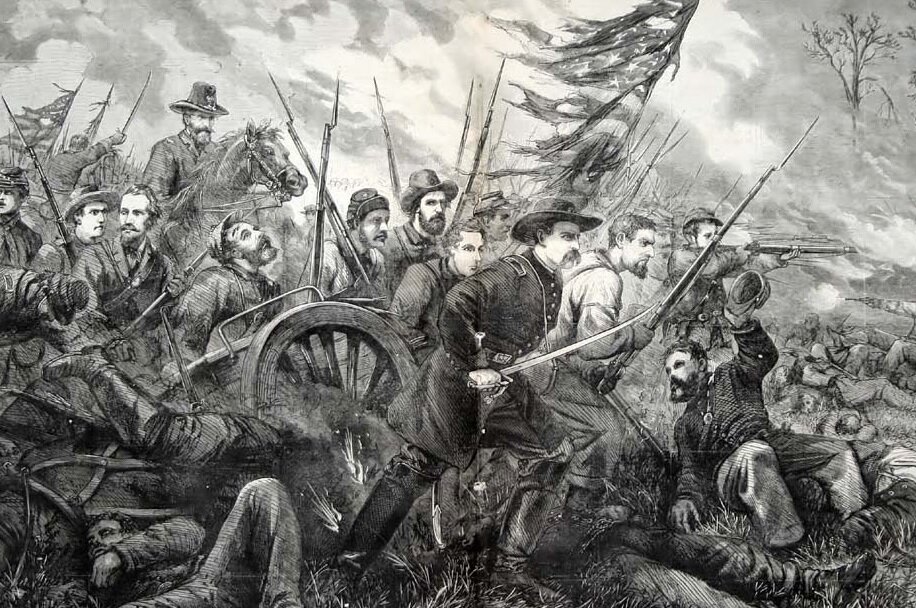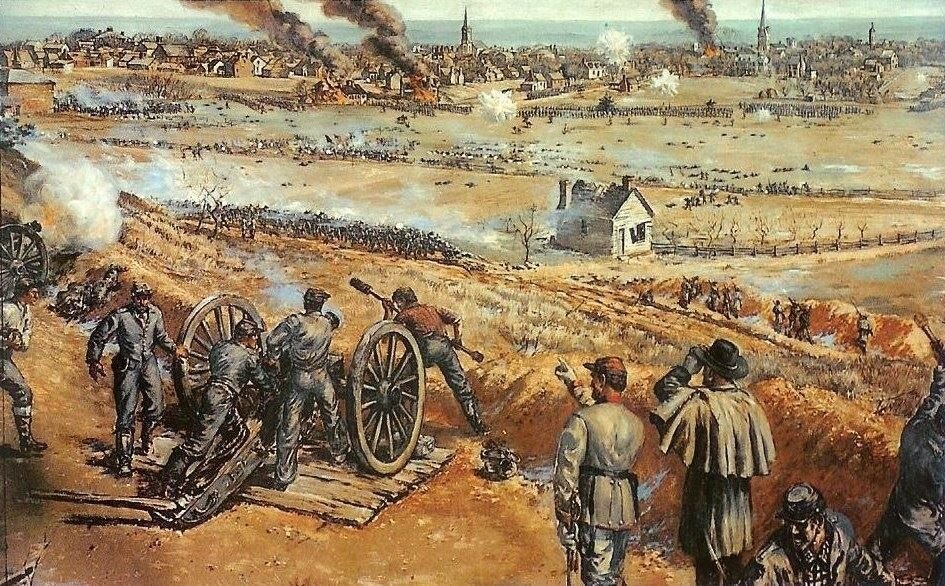Civil War Road Trip - East Coast
The National Park Service (NPS) is more than just our 63 National Parks. The NPS manages over 420 sites. They can be broken into two major categories: Parks of natural beauty, such as Yellowstone and Parks of historical value, such as the Statue of Liberty.
Over twenty of those sites relate to Civil War battles. Nine of them make a fascinating and educational East Coast Road Trip as shown on the map. Hover over the markers to get the place names and a link to the NPS webpage.
Gettysburg
The most famous Civil War battle, Gettysburg, was fought over three days, from July 1 to July 3, 1863. Confederate General Robert E. Lee invaded the North to convince the North to accept Southern independence. The Union won. The three-day battle was the bloodiest of the war. Lee's army was forced to retreat into Virginia. After the battle, the Confederacy was on the defensive for the remaining two years of the war.
The battle sprawled over several thousand acres. While at Gettysburg, you can visit Eisenhower National Historic Site. After World War II, Eisenhower purchased a farm adjacent to Gettysburg. As President, he spent many weekends there, entertaining famous visitors including Khrushchev, De Gaulle, Churchill, and Ronald Reagan.
Antietam
A short 45-mile drive will bring you to Antietam. Robert E. Lee's first invasion of the North occurred in September 1862. Antietam was the single bloodiest day of the war. While a tactical draw, the Confederates withdrew back into Virginia. President Lincoln used the Union's success to announce the Emancipation Proclamation, freeing the slaves.
Harpers Ferry
The town of Harpers Ferry is fifteen miles from Antietam. Two important Civil War-related events occurred here. In 1859, abolitionist John Brown wanted to free the slaves through military action. With a small band of supporters, including several blacks, he briefly took over the Federal arsenal at Harpers Ferry. John Brown was captured and executed for treason. The raid inflamed tensions between the North and South becoming an impetus for the Civil War that started in 1861.
Harpers Ferry also was the site of the largest surrender of Federal forces during the Civil War. In 1862, a Confederate force led by “Stonewall” Jackson surrounded the Union force at Harpers Ferry. Over 12,000 Union soldiers surrendered.
Monocacy
This lesser-known battle may have saved the Union. During the summer of 1864, the war and Lincoln's re-election were both still in doubt. General Sherman was trying to capture Atlanta. General Grant was stalemated in trench warfare around Richmond and Petersburg. General Lee formulated one of his bold plans. With Union forces tied up in Virginia and Georgia, Lee sent a force to capture Washington, D.C. On July 9, 1864, the Confederates attacked the small, inexperienced Union force at Monocacy in Maryland. While the Confederates forced the Union to retreat, the day-long battle inflicted heavy casualties on the South. It delayed their advance onto Washington, DC. By the time the Confederates reached D.C. on July 12, Union reinforcements had arrived, and the city was saved. Monocacy became known as 'the battle that saved Washington'.
Manassas (Bull Run)
Near a small stream named Bull Run, the railroad junction of Manassas was the site of two major Civil War battles. The South started the Civil War when it fired on Fort Sumter in Charlestown harbor in April 1861. President Lincoln called for 75,000 volunteer troops on 90-day enlistments. In July 1861, with their enlistments expiring, the Union army moved South. After initial successes, Southern resistance forced the Union to retreat. The retreat turned into a rout.
In 1862, the Union army was split into two parts. One part under General McClellan was in eastern Virginia attempting to capture Richmond. The other part, under General Pope, was in northern Virginia, shielding Washington, D.C. After Lee halted McClellan's attacks, he concentrated his forces against Pope. In a several-day battle, Pope's forces were overwhelmingly defeated. This led to Lee's first invasion of the North and the subsequent clash at Antietam.
Fredericksburg and Spotsylvania
About 45 miles from Manassas lies the sprawling Fredericksburg and Spotsylvania National Military Park. This park preserves four major Civil War Battlefields.
1. Fredericksburg After forcing Lee to retreat at the battle of Antietam, the Union went on the attack at the northern Virginia town of Fredericksburg. The December 1862 battle was a crushing defeat for the Union.
2. Chancellorsville The Union regrouped after Fredericksburg and started another offensive in May 1863. In what has been described as "Lee's greatest victory," the Confederates defeated the Union in a series of brilliant maneuvers. Unfortunately for the South, General “Stonewall” Jackson, one of their best, was killed during the action. As a result of the victory, the Confederates once again invaded the North, leading to the battle of Gettysburg.
3. The Wilderness In the Spring of 1864, the new Union General, U.S. Grant, started his armies towards Richmond. In a brutal battle fought in thick woods (known as the Wilderness), General Lee inflicted heavy casualties on the North. However, Grant continued the attack by moving his troops onto the junction at Spotsylvania
4. Spotsylvania Court House In another vicious battle, once again Lee stymied Grant's advance while exacting many fatalities on the Union. Once again, Grant was not deterred and kept on his attempt to capture Richmond.
Richmond
This park, about 60 miles south of Fredericksburg, includes several important Civil War sites. The most important is Cold Harbor. In early June 1864, General Grant continued his attempts to advance towards Richmond. At this road junction, under 15 miles from Richmond, Union troops were mowed down as they assaulted entrenched Confederates. General Grant regretted this attack in his post-war memoirs – "I have always regretted that the last assault at Cold Harbor was ever made... No advantage whatever was gained to compensate for the heavy loss we sustained."
After Cold Harbor, General Grant stopped his attacks and resorted to trench warfare, stretching out and weakening the Confederate lines guarding Richmond and Petersburg.
Confederate Trenches
Petersburg
25 miles south of Richmond lies the Petersburg National Battlefield. Here General Grant laid siege to the vital town of Petersburg for over 275 days, from June 1864 through April 1865. If Grant could capture Petersburg, the South would be forced to abandon Richmond. Over nine months, Grant methodically advanced around Petersburg, slowly but surely weakening the South until April 1, 1865. Here at the Battle of Five Forks, Grant's forces severed the last rail line leading into Petersburg. This forced General Lee to abandon Petersburg and Richmond.
Appomattox
Lee Surrenders at Appomattox
About 90 miles from Richmond and Petersburg lies Appomattox. After leaving Richmond, Lee's army fled west planning to combine with Confederate forces in North Carolina. The Union caught up with them at Appomattox, and on April 9, 1865, Lee surrendered to Grant, bringing the Civil War to its end. As the NPS states on its website – "Could the nation survive a civil war intact, and would that nation exist without slavery? The answer to both was yes, and a new nation was born." Appomattox is a must-see to learn how the war ended and the generous terms offered by the Union to the surrendering Confederates.
Conclusion
It could easily take over a week to visit all these Civil War sites. Want to understand this part of our history? It's a great road trip.







